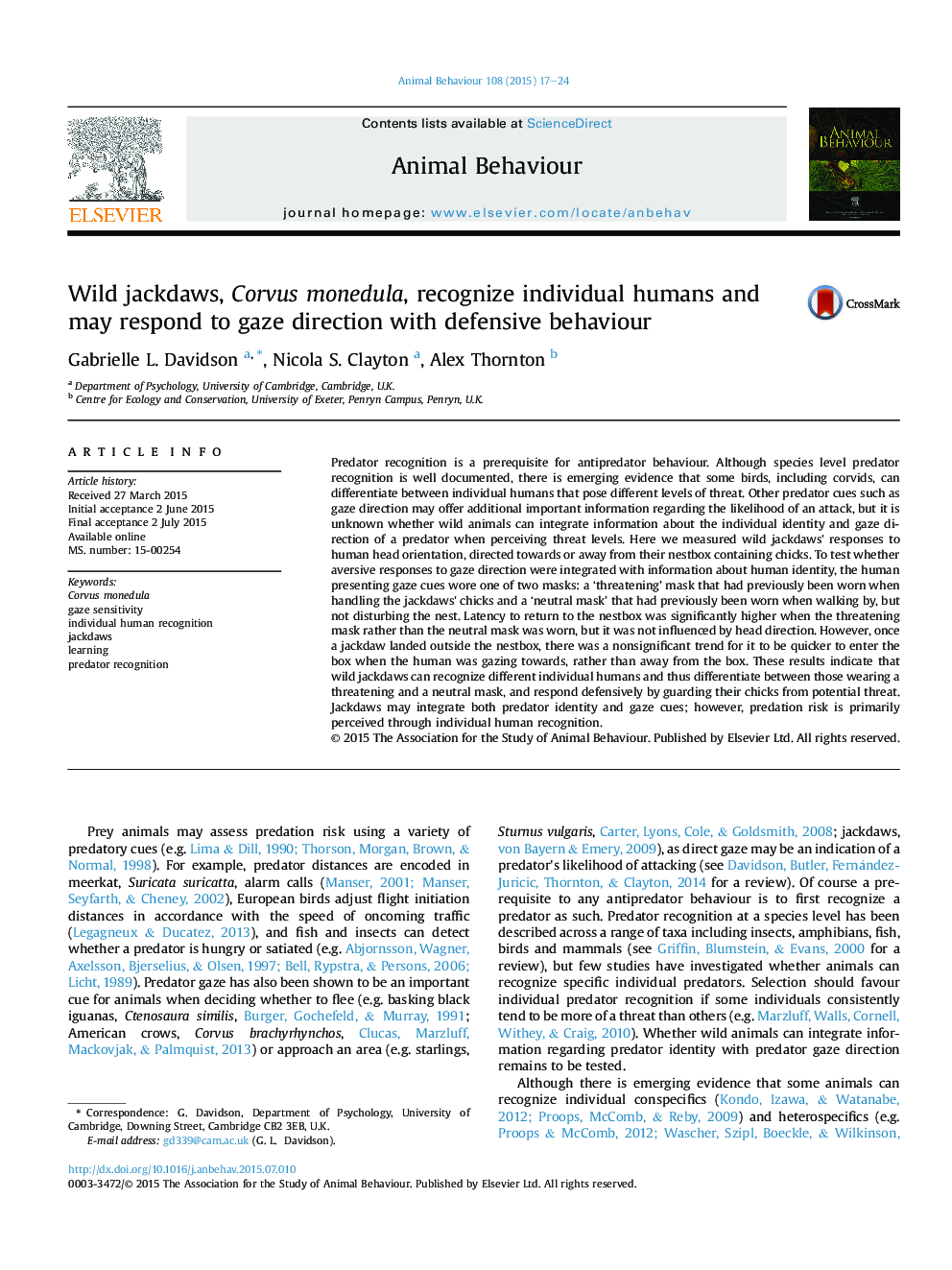| کد مقاله | کد نشریه | سال انتشار | مقاله انگلیسی | نسخه تمام متن |
|---|---|---|---|---|
| 8489619 | 1552220 | 2015 | 8 صفحه PDF | دانلود رایگان |
عنوان انگلیسی مقاله ISI
Wild jackdaws, Corvus monedula, recognize individual humans and may respond to gaze direction with defensive behaviour
دانلود مقاله + سفارش ترجمه
دانلود مقاله ISI انگلیسی
رایگان برای ایرانیان
موضوعات مرتبط
علوم زیستی و بیوفناوری
علوم کشاورزی و بیولوژیک
علوم دامی و جانورشناسی
پیش نمایش صفحه اول مقاله

چکیده انگلیسی
Predator recognition is a prerequisite for antipredator behaviour. Although species level predator recognition is well documented, there is emerging evidence that some birds, including corvids, can differentiate between individual humans that pose different levels of threat. Other predator cues such as gaze direction may offer additional important information regarding the likelihood of an attack, but it is unknown whether wild animals can integrate information about the individual identity and gaze direction of a predator when perceiving threat levels. Here we measured wild jackdaws' responses to human head orientation, directed towards or away from their nestbox containing chicks. To test whether aversive responses to gaze direction were integrated with information about human identity, the human presenting gaze cues wore one of two masks: a 'threatening' mask that had previously been worn when handling the jackdaws' chicks and a 'neutral mask' that had previously been worn when walking by, but not disturbing the nest. Latency to return to the nestbox was significantly higher when the threatening mask rather than the neutral mask was worn, but it was not influenced by head direction. However, once a jackdaw landed outside the nestbox, there was a nonsignificant trend for it to be quicker to enter the box when the human was gazing towards, rather than away from the box. These results indicate that wild jackdaws can recognize different individual humans and thus differentiate between those wearing a threatening and a neutral mask, and respond defensively by guarding their chicks from potential threat. Jackdaws may integrate both predator identity and gaze cues; however, predation risk is primarily perceived through individual human recognition.
ناشر
Database: Elsevier - ScienceDirect (ساینس دایرکت)
Journal: Animal Behaviour - Volume 108, October 2015, Pages 17-24
Journal: Animal Behaviour - Volume 108, October 2015, Pages 17-24
نویسندگان
Gabrielle L. Davidson, Nicola S. Clayton, Alex Thornton,